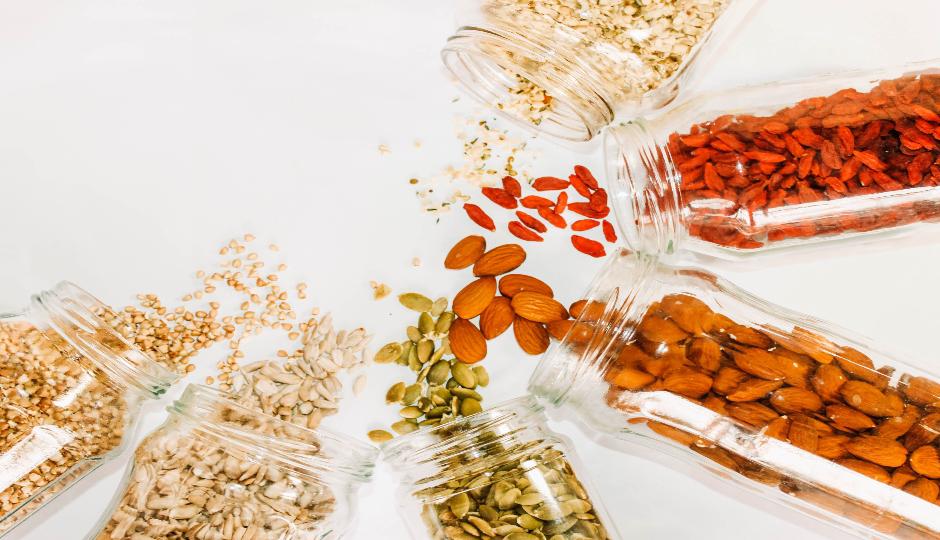Q: How does your body go into ketosis?
A: When you switch from a carb-based diet to a fat-dependent diet, the body responds by using fats as its primary energy source. When this happens, the body is said to have access to larger reservoirs of energy because it burns not only the additional fat being consumed, but also the excess body fat being stored. When the fat is turned into energy, chemicals called ketones build up in the body, resulting in a state of ketosis.
Q: What side effects can you experience while on a keto diet plan?
A: While being in a state of ketosis can improve mood and increase weight loss, beginning and maintaining a keto diet can come with some not-so-pleasant side effects.
“Keto flu” is one of them, and it typically occurs within the first two weeks of starting the diet. Symptoms often last for one to three days and include headaches, fatigue, indigestion, trouble sleeping, irritability, increased moodiness, less motivation, and brain fog. Dehydration is the most common cause of these symptoms, as the body can lose around 10 pounds of water weight in the first few weeks. While the body gets used to processing fat for energy rather than relying on carbs, you can decrease your chances of getting the “keto flu” by increasing your water intake and adding electrolytes to your diet during this time.
“Keto breath”—which smells about as good as it sounds—is another common occurrence during the first two weeks of starting the diet. This side effect is caused by acetone, a type of ketone produced as a result of converting fat into energy. Luckily, “keto breath” is usually short-lived because the body gets used to being in ketosis, but you might not want to schedule any dates or interviews during this time.
Q: Is the keto diet safe?
A: Since the ketogenic diet is relatively new, it is hard to say what the long-term impacts are, but it is generally believed to be a safe short-term diet for most healthy people. Many of the negative effects stem, at least in part, from not consuming enough water, though vitamin and calcium deficiencies have also been reported. Increasing water intake and adding supplements to your diet may help to decrease your odds of experiencing these issues, though it is recommended that you talk to your healthcare provider before starting any kind of diet regimen.
Q: What foods can I eat on the keto diet?
A: A surprising number of foods qualify as keto, so it is easy to use the diet as an excuse to eat tons of processed foods (though it rules out many of the popular choices such as potato chips and popcorn). Keto-approved snack options include keto cookies, keto bars, and even 70-percent or higher dark chocolate. And of course, dozens of whole, single-ingredient foods are allowed. Since keto is not entirely classified as an elimination diet, a small portion of just about anything is acceptable—except for sugar, which throws the body out of ketosis almost immediately.
Q: What should I put on my keto shopping list?
A: Variety is vital to obtaining all of the vitamins and minerals the body needs. So, it’s important to make a keto meal plan that includes carbs in small portions, a rotation of different kinds of meats, and plenty of non-starchy vegetables. In addition to following these basic rules, you should stock your keto pantry with:
- Coconut oil
- Ghee
- Grass-fed butter
- Olive oil
- Grass-fed beef
- Line-caught fish
- Organic chicken
- Seafood
- Cheese
- Cream
- Plain Greek yogurt
- Cottage cheese
- Eggs
- Non-starchy vegetables like spinach and brussels sprouts
- Cruciferous vegetables (like broccoli and cauliflower)
- Avocados
- Berries
- Olives
- Almond flour
- Nuts and seeds
- Coffee and tea (unsweetened)
- Dark chocolate and cocoa powder
Q: What should I avoid adding to my keto meals?
A: Since this diet is focused on creating a scientific change within the body, it is crucial that everything be monitored and certain foods be avoided. Many foods kick the body out of ketosis, including:
- Sugar
- Grains
- Starchy foods
- Fruits
- Beans and legumes
- Root vegetables
- Processed foods
- Soy
- Cashews and pistachios
- Unhealthy fats
- Alcohol
- Sugar alcohols
Q: What are the common mistakes people make when starting the keto diet?
A: As with most other diets, figuring out how to adapt to the keto foods can be a challenge. With so much attention focused on getting the proper percentages of proteins, fats, and carbs, it can be easy to forget to eat enough non-starchy vegetables, drink enough water, consume enough salt, and reach for whole food options rather than processed foods. Many things can bring you out of ketosis—including eating too much protein—so if you aren’t able and willing to focus a lot of attention on what you are eating, the keto diet might not be the best solution for you.
It is also important to remember that the keto diet can be implemented as a longer-term solution and that some of the weight you lose is likely water weight—meaning it will probably come back once you resume your regular diet.
But as a whole, the keto diet has been successful in reducing sugar-related cravings, increasing awareness of the ingredients in certain foods, lowering the amount of processed foods that are kept on hand, and in some people, even improving mood.
If keto is not for you, check out Everything in Moderation: The Next Nutrition Trend to see other options that might work better with your lifestyle.






